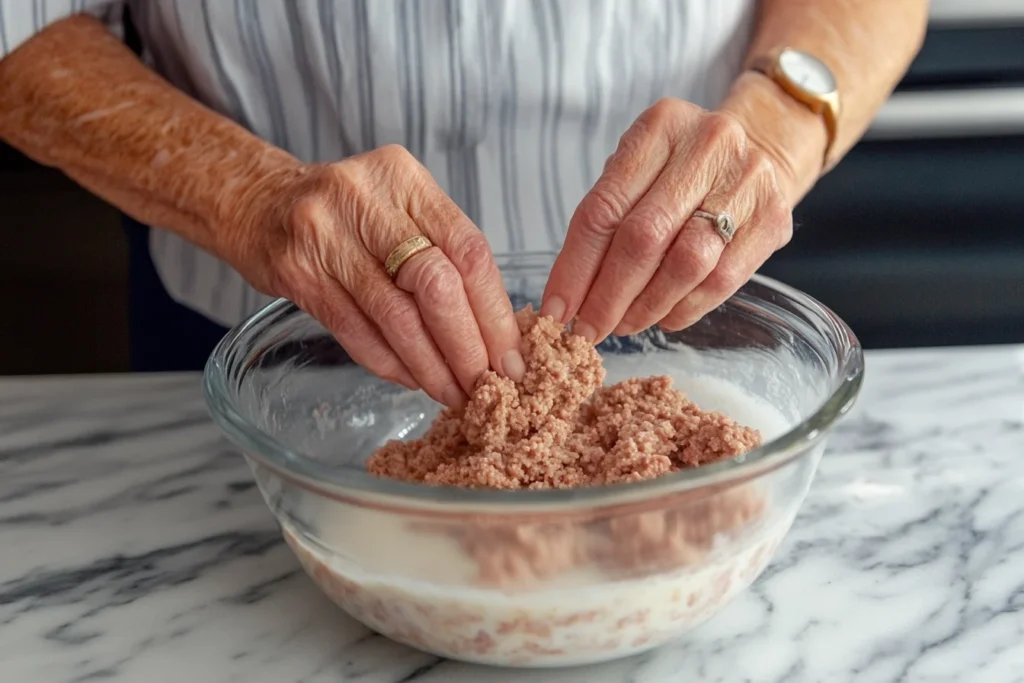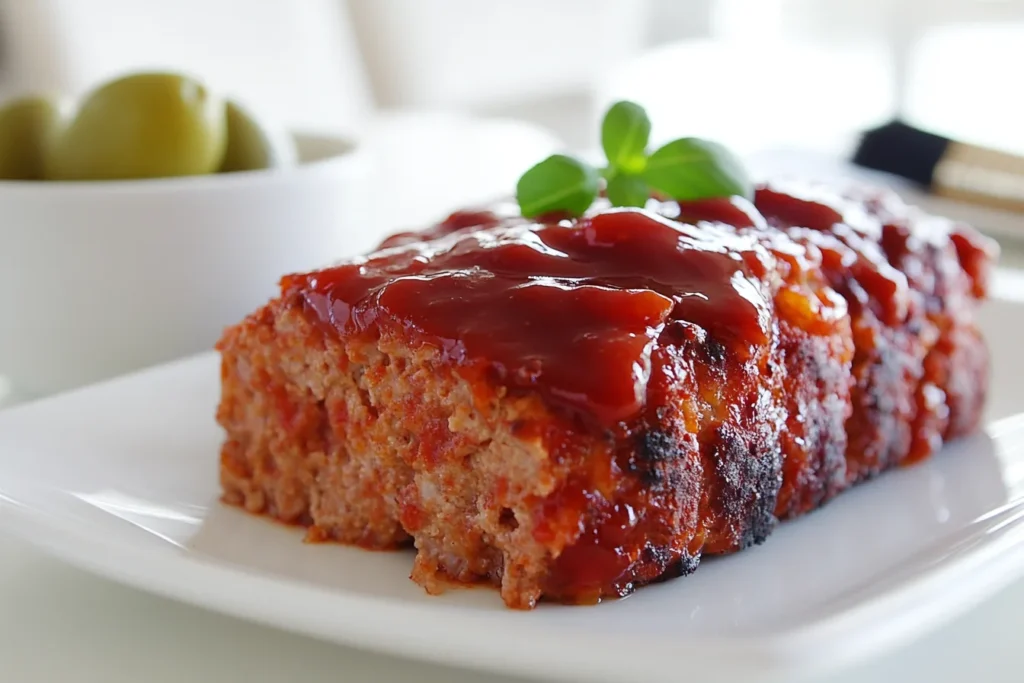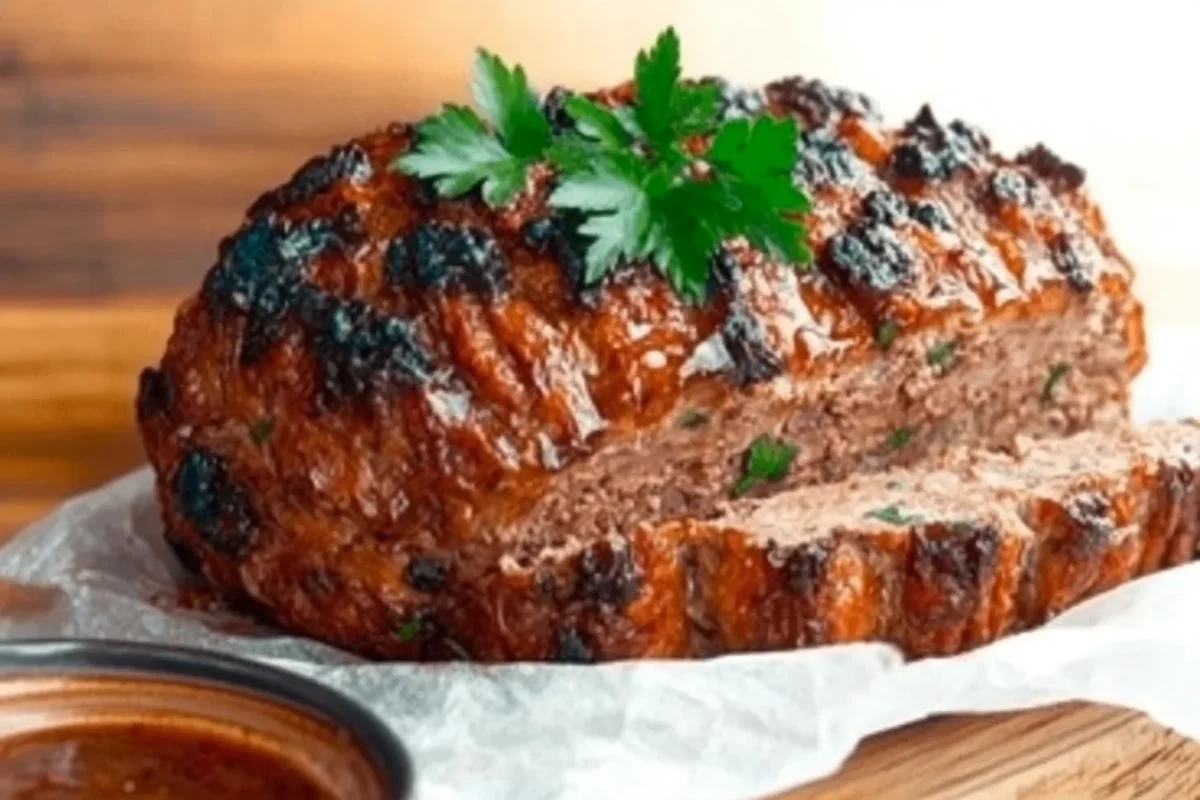There’s nothing quite like a slice of perfectly cooked, juicy meatloaf. It’s the ultimate comfort food, evoking memories of home-cooked meals and family dinners. Yet, achieving that tender, flavorful texture can feel like a mystery. In this article, we’ll uncover the secret to juicy meatloaf step by step, from selecting the best ingredients to mastering the cooking technique. Along the way, you’ll discover expert tips, common mistakes to avoid, and answers to frequently asked questions to ensure your meatloaf turns out moist and delicious every time.
Introduction to Meatloaf Perfection
What Makes a Meatloaf Juicy?
The foundation of a juicy meatloaf lies in achieving the right balance of moisture and texture. When it’s done right, meatloaf isn’t just moist; it’s bursting with flavors that blend harmoniously in every bite. Key contributors to its succulence include the choice of ingredients, the proper ratio of fat to meat, and techniques to lock in moisture during cooking.
Moisture retention is particularly important, as meatloaf can easily dry out if it’s overcooked or lacks adequate liquid components. Classic binders like milk, eggs, and breadcrumbs play a starring role here, acting as both stabilizers and moisture boosters.
Common Pitfalls in Achieving the Perfect Meatloaf
It’s surprisingly easy to end up with a dense, dry, or crumbly loaf, but understanding the most common mistakes can help you avoid them. Here are a few pitfalls to watch out for:
- Using Lean Meat: While lean ground meat may seem like a healthier option, it often lacks the fat content needed for that signature juiciness.
- Skipping the Binder: Without proper binders like breadcrumbs or eggs, your meatloaf can fall apart or become too dry.
- Overmixing the Ingredients: Overworking the mixture can lead to a tough and compact loaf.
- Incorrect Cooking Temperature: Baking at too high a temperature can cause moisture to evaporate, leaving your meatloaf dry.
By tackling these issues, you’re already on the path to creating a meatloaf that’s moist, flavorful, and unforgettable. With these fundamentals covered, let’s dive deeper into the secrets of choosing the right ingredients in the next part.
Choosing the Right Ingredients for Juicy Meatloaf
The Role of Meat: Beef, Pork, or a Blend?
One of the biggest secrets to making juicy meatloaf lies in the choice of meat. Fat content is essential for keeping the loaf moist, which is why using 80/20 ground beef (80% lean, 20% fat) is a popular choice. If you’re looking to add more depth of flavor, consider blending ground beef with pork or veal. These meats introduce a slight sweetness and additional fat that enhances both the texture and taste.
Ground turkey is a viable alternative for a leaner option, but it’s crucial to counteract its dryness by incorporating moisture-rich ingredients like grated vegetables or soaked breadcrumbs.
Binders and Fillers: Why Milk, Eggs, and Breadcrumbs Matter
Binders and fillers are the backbone of a perfectly cohesive meatloaf. Eggs provide structure, while milk-soaked breadcrumbs add moisture and prevent the loaf from becoming dense. You can also use panko or rolled oats as fillers, though these tend to create a slightly firmer texture.
An often-overlooked trick is using a panade—a mixture of milk and bread crumbs—which acts as a sponge to keep the juices inside the meatloaf as it cooks.
Secret Ingredients for Extra Moisture
If you want to know what is the secret to juicy meatloaf, secret ingredients are a game-changer. Additions like finely grated onions or zucchini introduce moisture while blending seamlessly into the loaf. Worcestershire sauce, ketchup, or even a touch of cream can enhance the meat’s juiciness and flavor.
Another pro tip? Try a splash of beef stock or broth in the mix. It’s an easy way to infuse flavor while ensuring your meatloaf stays moist.
Techniques for Preparing Juicy Meatloaf

Mixing Without Overworking: Why It’s Key
The way you handle your ingredients can make or break your meatloaf. Overmixing is a common mistake that leads to a dense and tough loaf. Combine ingredients gently, just until they are incorporated, to maintain an airy texture.
Layering Flavors for Moisture Retention
Incorporating layers of flavor is another secret to keeping your meatloaf juicy. Start by seasoning your meat generously with salt, pepper, and your favorite spices. Add in a mix of fresh herbs like parsley or thyme to boost the taste.
Sauces like ketchup, mustard, or even barbecue sauce can be layered into the loaf itself or spread on top as a glaze. This not only locks in moisture but also creates a delicious crust during baking.
Shaping the Loaf: Avoiding Dry Edges
How you shape your loaf can affect its moisture level. Avoid pressing the meat too firmly when shaping—it should hold together but not feel compacted. A free-form loaf allows for better air circulation, but using a loaf pan as a mold can help maintain the shape while reducing surface drying.
The Role of Cooking Methods in Juicy Meatloaf
Oven Temperature and Cooking Time: Getting It Just Right
Cooking your meatloaf at the right temperature is crucial to achieving that juicy, tender texture. A lower temperature, like 350°F, allows the loaf to cook evenly without drying out. High temperatures can cause the exterior to overcook while the center remains underdone.
Always use a meat thermometer to check for doneness. The internal temperature should reach 160°F for beef and pork-based meatloaf and 165°F if using turkey or chicken. Once it hits the right temperature, remove it immediately to prevent overcooking. Remember, carryover cooking can raise the temperature slightly after it’s removed from the oven.
To Cover or Not to Cover? The Science Behind the Debate
Many cooks wonder: should you cook meatloaf covered or uncovered? Covering it with foil for the first part of baking helps retain moisture by trapping steam. For the last 15 minutes, removing the foil allows the top to caramelize and form a flavorful crust.
If you’re glazing your meatloaf, this step is even more critical. The uncovered finish ensures the glaze thickens and caramelizes beautifully without burning.
Resting the Meatloaf: Preserving Juiciness Post-Cooking
Letting your meatloaf rest after cooking is one of the simplest, yet most overlooked, secrets to keeping it moist. Resting allows the juices to redistribute throughout the loaf, preventing them from spilling out when sliced.
A rest period of 10–15 minutes is ideal. Covering the loaf lightly with foil during this time keeps it warm while ensuring maximum juiciness in every slice.
Enhancing Juiciness with Sauces and Toppings

Classic Ketchup Glaze vs. Modern Alternatives
No discussion about what is the secret to juicy meatloaf is complete without mentioning the glaze. The classic ketchup topping is beloved for its tangy-sweet flavor that complements the savory loaf. However, don’t be afraid to experiment with alternatives like barbecue sauce, honey mustard, or even a balsamic reduction for a unique twist.
These toppings do more than add flavor—they create a barrier that helps lock in moisture, ensuring the meatloaf stays tender while developing a rich, glossy crust.
How and When to Apply the Glaze
Timing is everything when it comes to glazing. Apply your glaze during the last 15–20 minutes of cooking to prevent it from burning while still allowing it to caramelize. For an extra layer of flavor, brush on a thin layer of glaze before baking and add more towards the end.
For more mouthwatering recipes and tips, check out our Classic Meatloaf Recipe, which includes step-by-step instructions for achieving the perfect balance of flavor and moisture.
With the right techniques and ingredients, your meatloaf will become a household favorite. Now, let’s explore FAQs and expert tips in the next sections to perfect your dish!
FAQs About Juicy Meatloaf
Why Do You Put Milk in Meatloaf?
Milk is a key ingredient in many meatloaf recipes because it adds moisture and helps bind the loaf together. When combined with breadcrumbs, milk forms a panade—a paste-like mixture that keeps the meat from drying out during cooking. If you’re wondering what is the secret to juicy meatloaf, this simple step is a big part of the answer.
What Helps Keep Meatloaf Moist?
Keeping meatloaf moist requires a mix of fat, binders, and liquid ingredients. Using 80/20 ground beef ensures there’s enough fat to add richness. Meanwhile, eggs, ketchup, and Worcestershire sauce provide additional moisture. Avoid overmixing, as it can make the meat dense and less juicy.
What Does Adding an Extra Egg to Meatloaf Do?
Adding an extra egg makes the meatloaf richer and more cohesive. Eggs not only bind the ingredients but also contribute to the loaf’s moist texture. Be careful not to overdo it—too many eggs can make the loaf dense.
Is It Better to Cook Meatloaf Covered or Uncovered?
Cooking meatloaf covered for the first part of baking traps steam, which keeps it moist. Uncovering it later allows the top to caramelize, adding flavor and texture.
Expert Tips and Tricks for Juicy Meatloaf
Pre-Soaking Breadcrumbs in Milk
One pro tip for achieving the perfect texture is to pre-soak breadcrumbs in milk before mixing them into your meatloaf. This step ensures that the breadcrumbs don’t pull moisture from the meat as it cooks. Instead, they act like tiny sponges, releasing moisture into the loaf.
Using Vegetables for Added Moisture
Incorporating finely grated vegetables like onions, zucchini, or carrots can elevate your meatloaf from good to exceptional. These veggies not only add natural sweetness but also provide extra moisture. They blend seamlessly into the mixture, so even picky eaters won’t notice them.
Experimenting with Different Meat Ratios
For a meatloaf that’s bursting with flavor, try experimenting with a mix of meats. A combination of ground beef, pork, and veal delivers a balance of fat and flavor. If you prefer a lighter option, blend ground turkey with a small amount of ground pork for added juiciness.
By following these expert tips, you’ll never have to ask what is the secret to juicy meatloaf again. These tried-and-true methods ensure your loaf is packed with flavor and moisture every time.
Conclusion: Unlocking the Secret to Juicy Meatloaf
Summary of Key Steps for Juicy Meatloaf
Creating the perfect meatloaf comes down to a few well-practiced techniques. From choosing the right meat with enough fat content to incorporating moisture-rich ingredients like milk-soaked breadcrumbs and grated vegetables, every step plays a vital role. Cooking methods also matter; using the proper temperature, glazing at the right time, and letting the loaf rest ensures every slice is moist and flavorful. Now you know what is the secret to juicy meatloaf, and you’re equipped to recreate it in your own kitchen.
Encouragement to Experiment and Customize Recipes
The beauty of meatloaf lies in its versatility. Once you’ve mastered the basics, don’t hesitate to experiment. Add your favorite seasonings, swap out ingredients for dietary needs, or try different toppings to make it your own. With a little creativity, your meatloaf can evolve into a signature dish that your family and friends will love.
If you’re ready for more inspiration, check out related recipes to explore new twists on classic dishes.
Call to Action and Final Thoughts
Share Your Meatloaf Journey
Now that you’ve unlocked the secret to juicy meatloaf, it’s time to put your skills to the test. Try out these tips and techniques, and don’t forget to share your results. Whether it’s a family dinner or a new addition to your weeknight meals, a perfectly cooked meatloaf is always a crowd-pleaser.
For more recipes and tips, explore our collection of comforting classics that will bring joy to your kitchen. Let’s make every meal special!
Nutritional Information (Per 100g)
Below is the nutritional content of a classic meatloaf per 100g serving:
| Nutrient | Amount |
|---|---|
| Calories | 250 kcal |
| Protein | 16 g |
| Fat | 18 g |
| Saturated Fat | 7 g |
| Carbohydrates | 9 g |
| Sugar | 3 g |
| Fiber | 0.5 g |
| Sodium | 420 mg |

